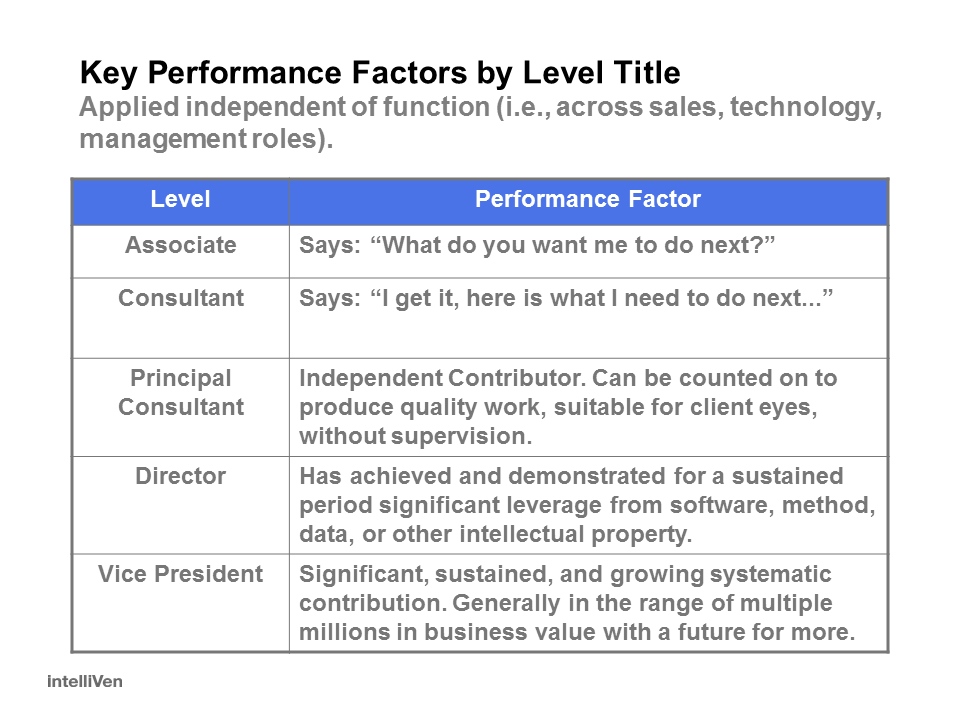It is a good practice to separate level titles from job functions. This independence allows general criteria to be applied as it makes sense to a given the job function and in a way that transcends job functions so that we can assign someone to a new role without having to rethink the level-title.
The criteria below are generally applicable and have been developed and proven useful over decades of application. Note that the level descriptions stay clear of definitions tied to functions performed and number of people managed in favor of how a person performs and the outputs produced.
Level-1: Demonstrates a high degree of proficiency in some area of great importance to the business. Has applied the proficiency with a high degree of independence and over a sustained period (generally two to three years) and is a recognized expert in the area.
Level-2: Demonstrates a high degree of leverage. Leverage is where the work of one person generates outputs of many. For example, a person who invents a software product or a new way of selling, or who leads a large team of people is highly leveraged. In these situations, when you name the specific project, method, invention etc. you think of the person by name. Conversely, when you name the person, you think of the method, product, or project. The demonstrated leverage will have been successful for an extended period (generally two to three years), is still successful, and expectation are that it will continue to be successful well into the future.
Level-3: Deliveres significant contribution to the performance and growth of the organization. The contribution can come in any of many forms but it will be distinguished by its measurable significance in scale (e.g., measured in millions of dollars), duration (generally two to three years), and future prospects (generally unlimited).
When a level-title is awarded, the recipient is expected to continue to demonstrate the ability and results that lead to the award and to work towards the next level title .
When a case can be made that a level-title has been earned it is prepared and submitted as a nomination to a cross-organization review board that meets annually. HR drives the nomination review process. Periodically, throughout the year, HR connects with leaders across the organization to know who is tracking for which levels over the next two to three years.
Special attention is required by leaders to track personnel toward their next level. This is especially true of high-potential employees who need to be tracked aggressively and even more especially of women, minorities, and other special classes when there are not as many role models to inspire them nor existing resources of like-kind to coach them.
When a nomination is considered it will be judged to be a qualifying case or an incomplete case or an unqualified case.
Compensation components, such as profit sharing, equity participation, bonus awards as a percent of base salary are consistent by level across the organization.
Management wants employees to perform at ever higher levels. By making clear what is expected, leaders increase the odds of employees striving to grow and succeeding in so doing to everyone’s individual and collective benefit. In communicating Level Criteria it is important to provide well-developed examples of how people could earn level titles including reference to specific relevent past case examples.
The names associated with each level are set by local preference and convention. For example Levels 1 through 3 may be referred to as Principal, Senior Principal, and Vice President or as Manager, Director, and Managing Director. More important than level title names, is to be consistent in the application of titles in line with a codified and communicated set of definitions and criteria such as are presented here.
Note that while inventing and assigning criteria, levels, and level names on-the-fly may seem to make sense in the moment, so doing invariably sows seeds of discontent that will be hard to address in the future.

